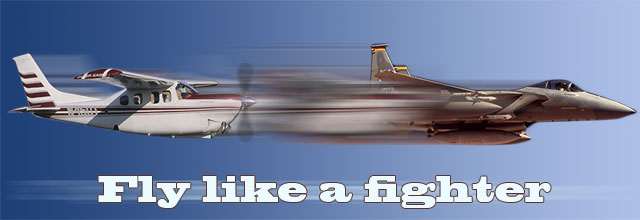
My first training dogfight against an F-16 was a memorable one. I was flying against an experienced instructor pilot, so I knew it was going to be a difficult task to do well against him. I had no delusions of grandeur. My simple goal was to not look stupid.
After some ranging exercises, we set up for a short-range dogfight with me on offense. I was able to eventually take some gun shots at him, but didn’t feel like I was stabilized enough to call a kill. That actually boosted my confidence a little, as it was a better outcome than the basic goal I had set for myself.
The next engagement was a medium-range dogfight with me on offense. His initial defensive move was a slightly descending break turn of 9 Gs. Because this tremendously reduced his turning radius, I wasn’t able to turn inside of him from my initial position 6,000 feet away. My move was to climb slightly into the vertical toward his turn point, then begin my offensive break turn to follow him.
The timing of all of this is critical, down to tenths of a second. I needed to create some turning room—with my nose off of him—to be able to eventually turn back inside of him for a shot. But if I flew my nose too far away from him and let off the pressure, he could then execute some defensive counters that would negate my attack. I realized that I had turned late. This allowed him to start a climbing turn to get further away from my nose, so I reacted and follow him in the climbing turn. He was hoping to get enough altitude above me to then pirouette over me and take a shot as he exited the fight in the opposite direction.
I still had enough energy and had kept my nose close enough to him that he couldn’t execute the pirouette. As I flew my nose closer to him, he had to climb a little higher to stay above me. He was essentially in slow flight, wings level, about 30 degrees nose high, and about 1,000 feet above me. I didn’t have enough energy to pull my nose up for a shot, so I wound up in slow flight below and slightly behind him. Like a cat, I had him treed.
Follow-on options for him were limited. In our current positions I couldn’t take a shot, but in full afterburner we couldn’t stay there forever without running out of gas. The only place for him to go to gain airspeed was down, which is where I was. He eventually dumped his nose into a right turn, unloaded to accelerate, and I followed. As my nose started pointing at him again, we wound up in another tree. This happened two more times. So now in our fourth tree, I tried something a little different. I did a quick lowering of the nose to gain a little airspeed, then smoothly pulled up and cashed in all of my airspeed to attempt a shot with him almost directly above me. I had a radar lock but wasn’t able to get a missile shot off before he started his fourth dump and dive. He then called knock it off because we had spent enough fuel on that engagement.
In the debrief we watched my HUD video. In that fourth tree, something interesting showed up. For a split second I actually had an in-range cue for a missile shot, but at the time I didn’t see it. It wasn’t textbook, but I had kept the pressure on well enough that I could have taken a kill shot—if I had seen it. So don’t ever give up. You may be doing better than you think.



